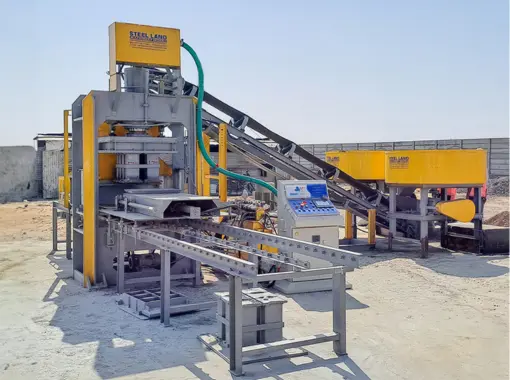As India embraces faster construction and greener building practices, the automatic fly ash brick machine has emerged as a powerful solution for high-volume, high-quality, and sustainable brick production.
If you’re in the construction, real estate, or manufacturing industry, this guide explains how the machine works, what makes it better than traditional setups, and why more companies are choosing it today. Leading brick machinery manufacturers in India are offering fully automatic systems with cutting-edge hydraulic and PLC controls to support modern infrastructure needs.
What is an Automatic Fly Ash Brick Machine?
An automatic fly ash brick machine is an industrial-grade equipment that produces bricks using a fully automated process. The machine uses fly ash, cement or lime, sand, and water to manufacture strong, uniform bricks at scale.
What makes this machine stand out is its automation level—from raw material feeding to brick ejection—everything is handled by sensors, conveyors, and hydraulic systems, minimizing manual labor and maximizing productivity.
How Does an Automatic Fly Ash Brick Machine Work?
Here’s a step-by-step process:
1. Material Feeding: Fly ash, sand, and cement/lime are automatically measured and transferred to the mixing unit.
2. Mixing Process: The raw materials are mixed evenly with water.
3. Mould Filling: The mixture is automatically pushed into brick moulds.
4. Hydraulic Pressing: A hydraulic press applies uniform pressure to compact the mix into solid bricks.
5. Automatic Ejection: Finished bricks are ejected onto pallets.
6. Curing Section (Optional): Steam or heat-based curing systems accelerate the hardening.
Key Features of Automatic Fly Ash Bricks Machines
– PLC controlled automation system
– High-pressure hydraulic system (up to 200 tons)
– Conveyor belt with automatic feeding
– Multi-brick moulding capacity (4, 6, or 8 bricks per cycle)
– Heavy-duty vibrating table for uniform compaction
– Oil tank capacity of 200 litres for continuous operation
– Brick size accuracy for better construction fit
Why Automatic is Better Than Manual or Semi-Automatic Options
Automatic machines require minimal labor, offer high-speed production, and ensure uniform product quality, unlike manual machines. They’re best for large-scale operations due to superior consistency, energy efficiency, and long-term ROI.
Where Are Automatic Fly Ash Brick Machines Used?
– Affordable Housing Projects (PMAY)
– Smart Cities Infrastructure
– Industrial and SEZ Parks
– Real Estate & High-Rise Developers
– Road and Transport Infrastructure Projects
Maintenance Tips to Keep It Running Smoothly
– Lubricate moving parts regularly
– Clean the brick moulds after each shift
– Check PLC controls and update software if needed
– Inspect hydraulic oil levels and filters
– Train operators for safe and efficient handling
Pro Tip: Choosing the Right Manufacturer Matters
When investing in an automatic fly ash brick machine, go with a company that offers:
– In-house manufacturing
– Customization support
– On-site installation and training
– Dedicated post-sales service
Steel Land Machinery Works is among the trusted brick machinery manufacturers in India, delivering robust machines tailored to Indian conditions.
To explore more technical specs and layout drawings, visit our fly ash brick making machine page
Conclusion: Automation is the Future of Brick Manufacturing
The automatic fly ash brick machine enables manufacturers to scale output, meet sustainability goals, and reduce labor overhead. If you’re planning to future-proof your brick business, going automatic is the smartest decision you can make in 2025.
People Also Ask (FAQs)
Q: What is the production capacity of an automatic fly ash brick machine?
A: Most machines can produce between 10,000 to 25,000 bricks per day, depending on configuration.
Q: Does the machine need continuous manual supervision?
A: No. It requires minimal supervision thanks to PLC and sensor-based automation.
Q: What type of bricks can be made?
A: Solid bricks, hollow blocks, and customized shapes (with changeable moulds).
Q: How is it better than a manual brick machine?
A: It offers faster production, consistent quality, reduced labor, and long-term ROI.
Q: What raw materials are used?
A: Fly ash, sand, cement or lime, and water — all widely available in India.



 by 47+ Clients
by 47+ Clients
 Call Now
Call Now.png)